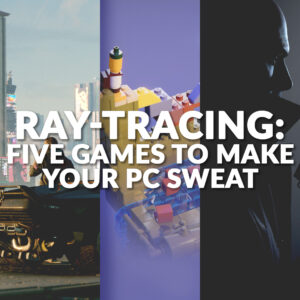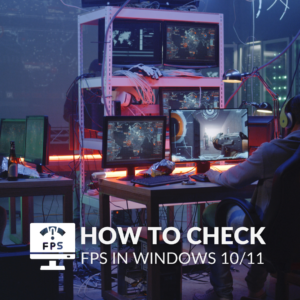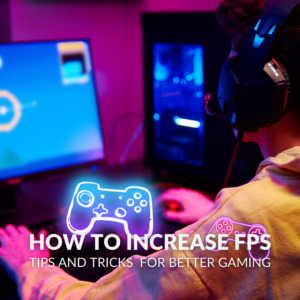Are your gaming marathons being plagued by poor performance and low visuals? All your troubles can be solved by making a few tweaks to your PC and game settings. Both of which can optimise your PC for gaming.
Those game setting screens can look mighty scary – my brain can’t handle all those different options with their fancy names! Thankfully we’ve broken down everything you need to know, including how to optimise your in-game settings and some simple Windows tweaks.
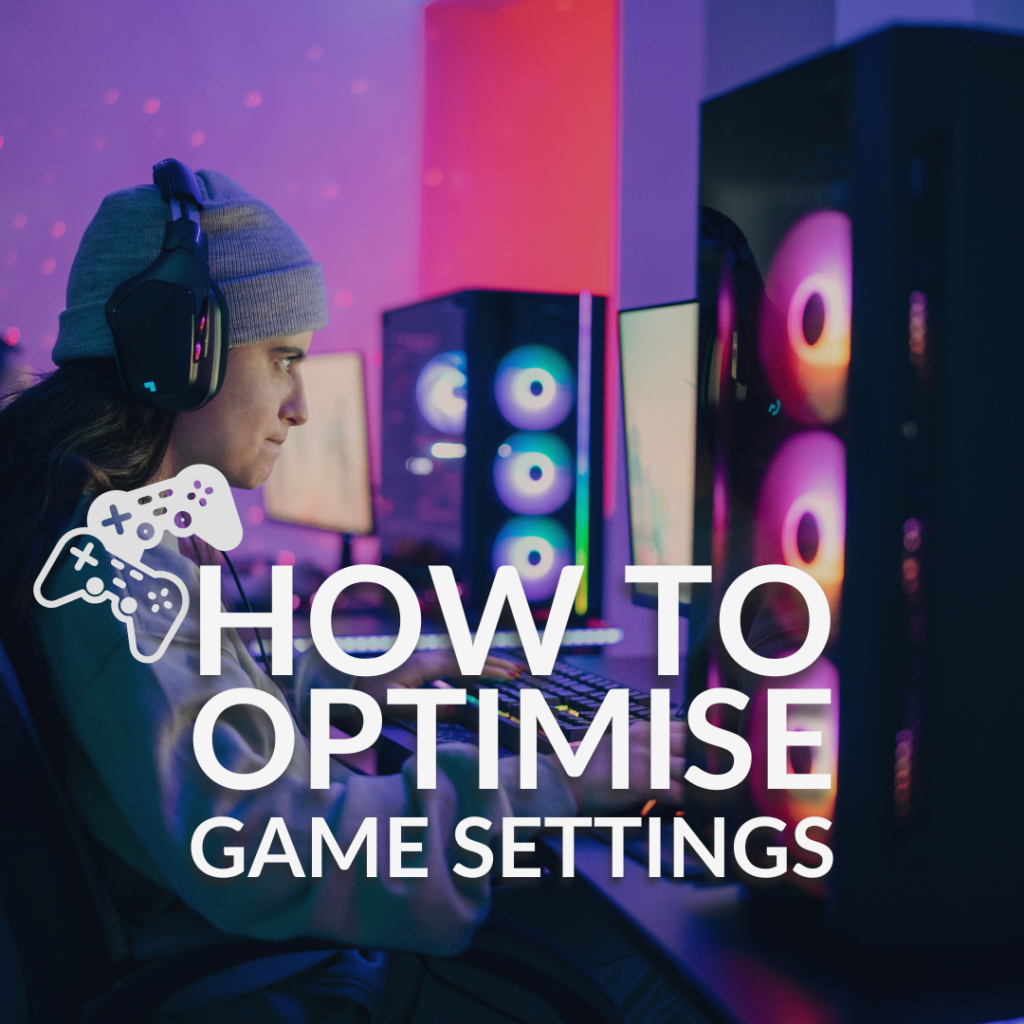
Why Should You Optimise Your Game Settings?
Making a few simple tweaks to your game settings can notably reduce strain where it’s not needed and boost your in-game performance. Both of which can help you get the most out of your hardware to secure your virtual victory and dominate your enemies.
What might look like a minor, not-all-important setting, could make all the difference when it comes to chaotic boss battles, FPS, or even your immersion.
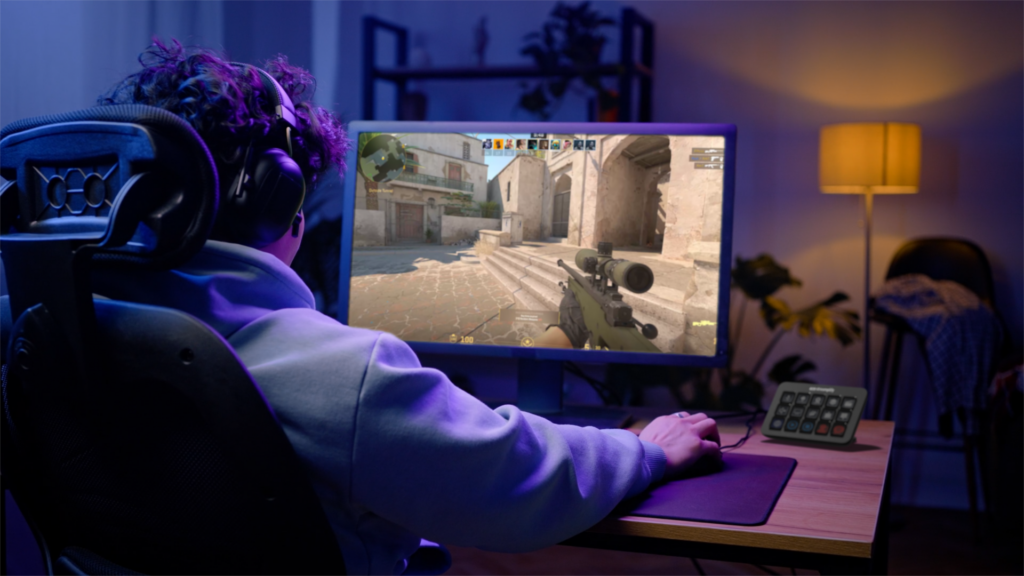
How to Optimise Your PC for Gaming
There are two different ways you can fine-tune your PC for gaming. This is through either the actual settings of the title you wish to play or through some simple tweaks done in Windows.
We’ve covered both below.
In-Game Settings
Every game you play will have its own dedicated settings to allow you to optimise the gameplay and graphics to suit your own preferences. No two games have the same adjustable settings; however, the most common ones include:
- Resolution
- Display Mode
- Texture
- Shadows/Lighting
- Detail
- Ray Tracing
- Anti-aliasing
- Upscaling
- Frame Rate Cap
We’ve broken down what each of these settings mean, and how they can help to enhance your gaming.
Resolution
This refers to the resolution in which each individual pixel is rendered at e.g. 1080p (1920 x 1080) or 1440p (2560 x 1440). The in-game resolution should be the same as your gaming monitor. If it’s not, you’ll certainly see a drop in performance and a blurry screen.
Display Mode
You’ll typically have the option to run your games in Full Screen, Windowed, or Borderless Window Mode. The latter allows you to easily click out of your game without any complicated keyboard shortcuts. However, unless you need to consistently check any secondary apps, Full Screen guarantees the best possible performance.
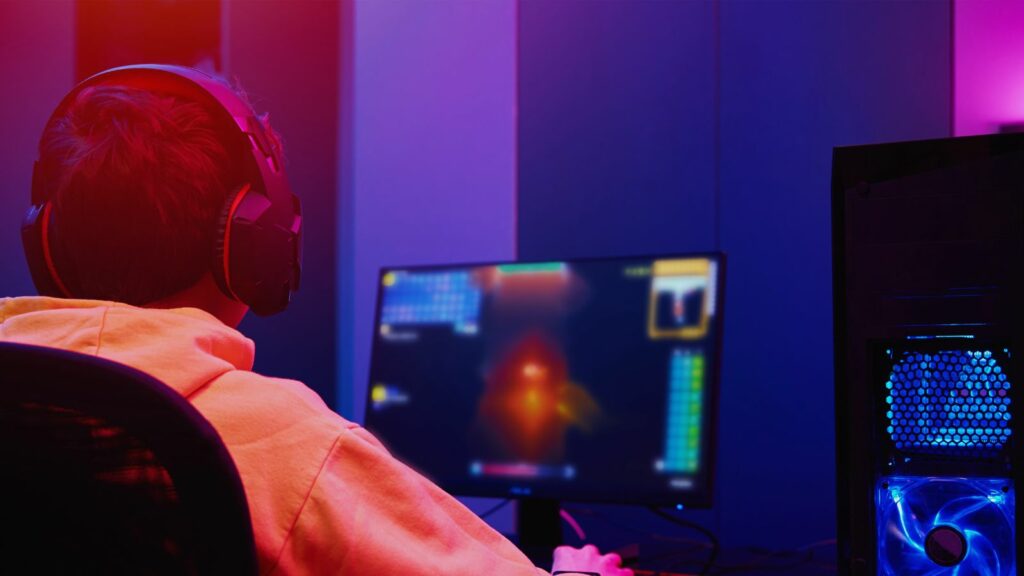
Texture
Each in-game model will have its own texture and resolution at which this texture is rendered. The higher this is, the more detailed they are. The sweet spot for your texture is to have it set at medium. This ensures your gameplay won’t be plagued by any blurring. Having this setting at high or low doesn’t particularly make much of a noticeable difference for both visuals and performance.
Shadows/Lighting
Both shadows and lighting are one of the most demanding aspects of any game and they can make or break your immersion. If you have this setting on too high, your hardware might not be able to keep up with the demands and your performance will struggle as a result. However, too low, and you won’t achieve that crisp realistic look to your games that you desire.
Like your texture settings, shadows/lighting are best advised to be kept at medium settings. This will be the sweet spot for delivering lifelike visual quality without any dramatic performance loss.
Level of Detail (LOD)
This does exactly as it says on the tin by determining how detailed any in-game objects will look at specific distances. On low settings, any objects or textures won’t be rendered in high-quality close up. However, when set to high, they will be detailed but further away.
Having this set too low can often result in many objects suddenly appearing, otherwise known as the ‘pop-in’ effect. If you find this happening, a quick adjustment to higher settings can fix this, but this does come with a cost to performance.
Ray Tracing
Ray Tracing can be extremely demanding on your hardware. However, it revolutionises the way shadows and lighting appear in your games by emulating how they behave in the real world. These exceptional visuals do have a major impact on your performance and may even halve your framerate.
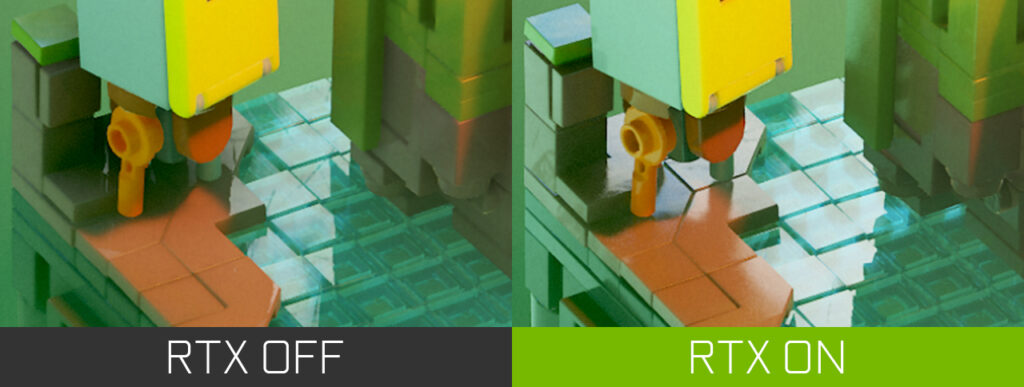
Therefore, unless you have the hardware to keep up with this or it’s a must-have feature, Ray Tracing is best saved for those select games that have been fine-tuned for it, such as Cyberpunk 2077 or Portal with RTX.
If you want to see just how stunning these two games can look, be sure to check out our blog posts.
Anti-aliasing
Anti-aliasing removes any jagged edges that you might see on in-game objects such as wires or rooftops. These unwanted visual effects are more noticeable at lower resolutions, however there are plenty of integrated tools designed to combat them, such as NVIDIA DLAA.
We covered more about DLAA in our dedicated ‘NVIDIA Inside Look’ series. Take a look!

Upscaling
Upscaling can have a huge impact on both your in-game performance and visual quality. There are countless upscaling technologies available such as AMD FSR, NVIDIA DLSS, or Intel XeSS, yet they all work in the same way.
Your games are rendered at lower resolutions before being intelligently upscaled to appear at a much higher one, boosting frame rates and image quality without any unwanted lag or display stutter. Some manufacturers take it even further by inserting AI-generated frames between existing ones to further facilitate smooth frame rates.
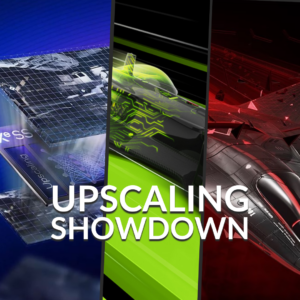
If you want to read more about DLSS, FSR, and XeSS be sure to check out our blog post. We go into even more detail about each and how they can enhance your gaming.
Frame Rate Cap
Having a maximum frame rate cap ensures your PC won’t be working overtime to render frames when it doesn’t need to. Your frame rate cap should be the same as the max refresh rate of your monitor, such as 120Hz or 240Hz. This will maintain performance, meaning you get the most out of your hardware, without putting too much strain on your PC.
If you’re looking for some helpful tips and advice on how to boost your FPS, the Overclockers UK blog has plenty of handy guides.
Tweaks to Windows
In addition to adjusting your in-game settings, you can also make changes to key features in Windows to further optimise your PC for gaming. This includes:
- Checking your monitor settings
- Updating any outdated drivers
- Limiting background apps
- Enable game mode
- Clean up your disk drives
Check Monitor Settings
After any Windows reinstalls, your gaming monitor can revert to a default resolution, which is often much lower than what it’s capable of. Taking a few extra minutes to check your monitor settings ensures it is performing at the maximum level.
It’s easy to do. Simply go into Settings > System > Display. Here you can check the resolution of your monitor and enable features such as HDR (if your monitor supports it). What’s more, selecting ‘Advanced Display’ allows you to fine-tune this further. You’ll be able to see what settings your gaming monitor is running at. If it is at a lower refresh rate than stated by the manufacturer, you can select the correct one from a drop-down list.
Update Drivers
Driver updates, such as those for graphics cards, often include support for brand-new releases along with plenty of optimisations for games to help improve performance. This can make a huge difference in your gameplay, allowing you to take advantage of all the innovative mechanics and enjoy the very best visuals.
If your drivers aren’t up to date, you may even notice your PC struggling to keep up, with slow loading time plaguing your gaming marathons.
If you don’t know how to update your GPU drivers, we’ve got a handy blog post that takes you step-by-step through the process.
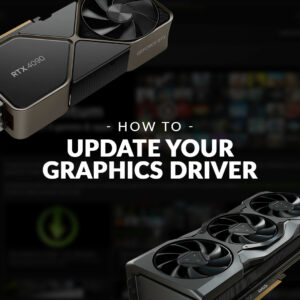
Limit Background Apps
Any programs running in the background will be using up precious resources that could be better spent on powering your favourite games.
The best way to see what applications you have running is through Task Manager. Here you’ll see a complete overview of everything you currently have open. Simply right-click on any that you don’t want running.
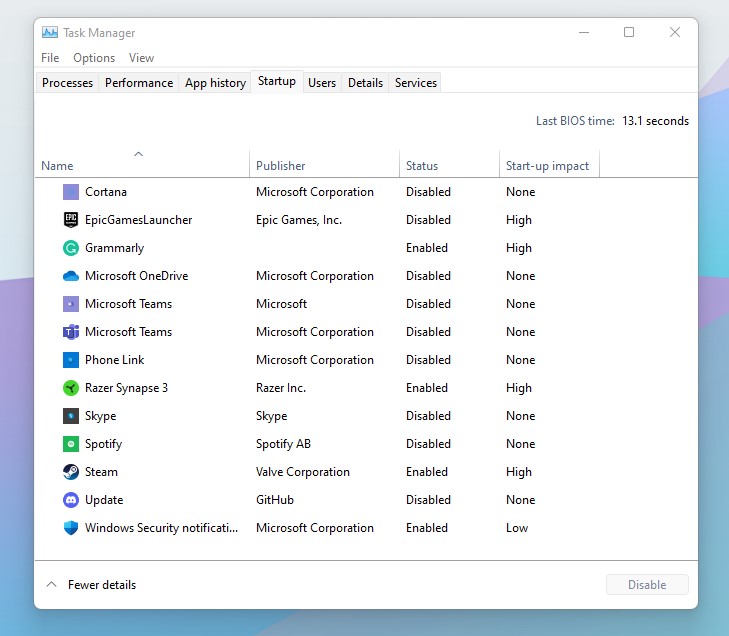
You don’t have to do this before every gaming marathon. In the Task Manager, you can limit what programs automatically open as your PC is booting up. To do, head into the ‘Startup’ tab and toggle on/off what you want to open straight away.
Turn on Game Mode
First introduced in Windows 10 is Game Mode. This built-in setting can be turned on/off to tell your PC when you’re gaming. This ensures that no background apps are prioritised over your latest gaming obsession.
Head into Settings > Gaming > and toggle Game Mode on/off.
Clean Up Disk Drives
A cluttered PC can’t perform the same as one that is clean and organised. Old apps, games, and unwanted files all take up precious space on your storage drivers which, in turn, can limit your in-game performance.
Giving your PC a good ol’ clear out will help to resolve a lot of system performance issues and give you lots of new space for all those games on your wishlist. Win, win, right?

We’re something of a cleaning expert at OcUK and we’ve written plenty of helpful guides all about getting your PC looking factory fresh. You can find all these posts in our very own cleaning hub.
Have You Tried Everything?
If you’ve tried tweaking all your settings and all our other top tips to no joy, it might simply be time to part ways with your old PC. Thankfully, we’ve got our top PC recs that are perfect to play plenty of the latest new releases. If our choices don’t suit your needs or vibe, you can also shop the full range by clicking the button.
Refract Gaming Jade Pre-Built PC
- Pre-built gaming PC
- AMD Ryzen 7 7700 CPU and NVIDIA RTX 4060 Ti GPU
- 32GB DDR5 RAM and 1TB M.2 SSD
- Integrated RGB lighting
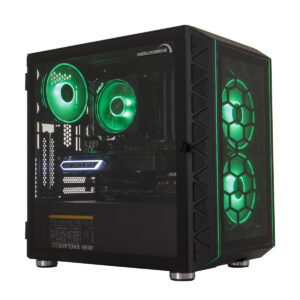
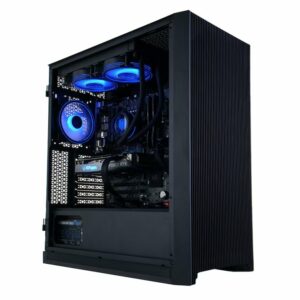
OcUK Gaming Sabre Configurable PC
- Configurable gaming PC
- Adjustable base hardware specification
- As standard includes an Intel i7 13700F CPU and NVIDIA RTX 4070 Super
- 32GB DDR5 RAM
- Optional M.2 and 2.5” SSDs
Help your Fellow Gamers!
Got any helpful advice or top tips for optimising your game or PC settings that we might have missed? Share them in the comments below!
*Prices correct at time of writing and PC specs are subject to change.



